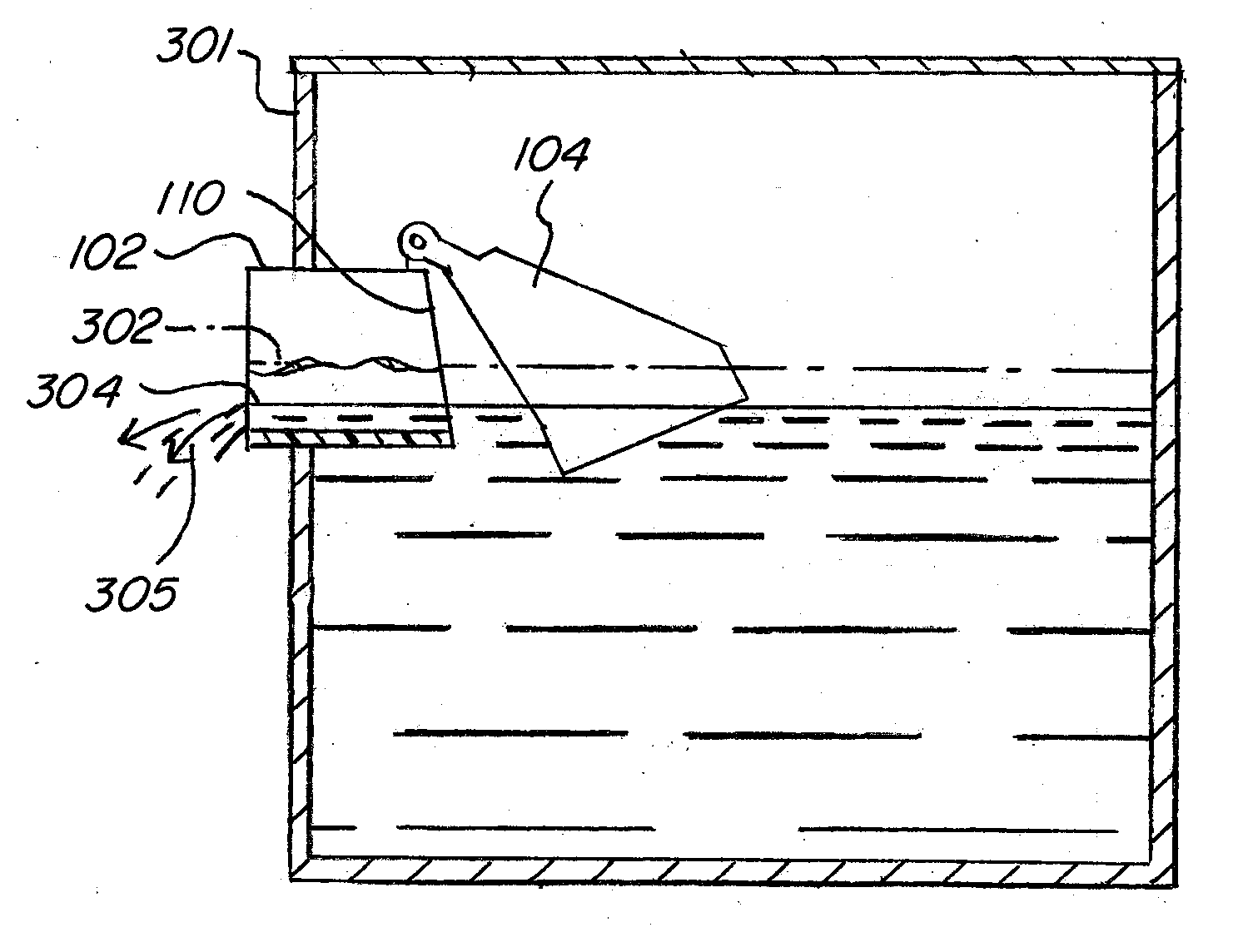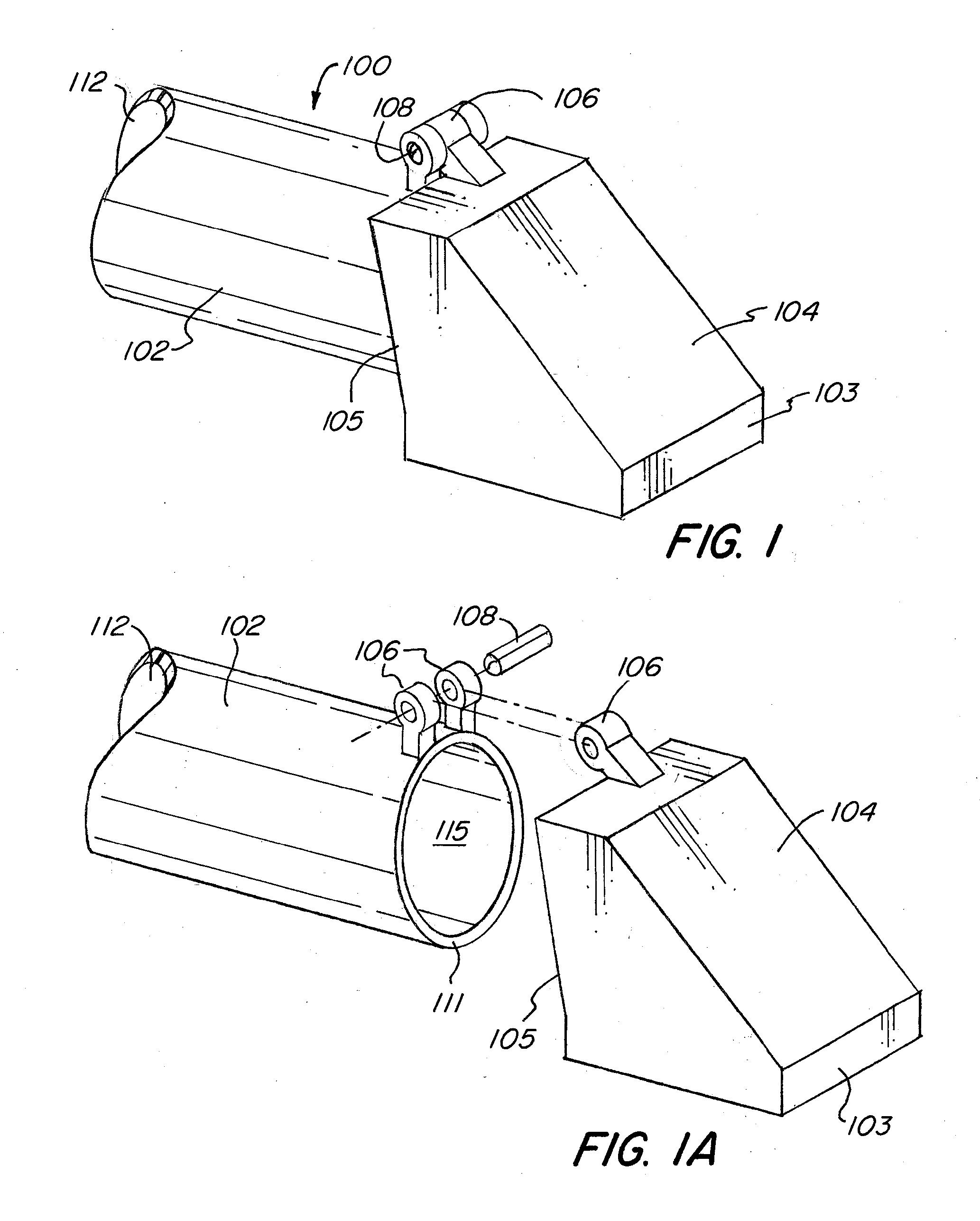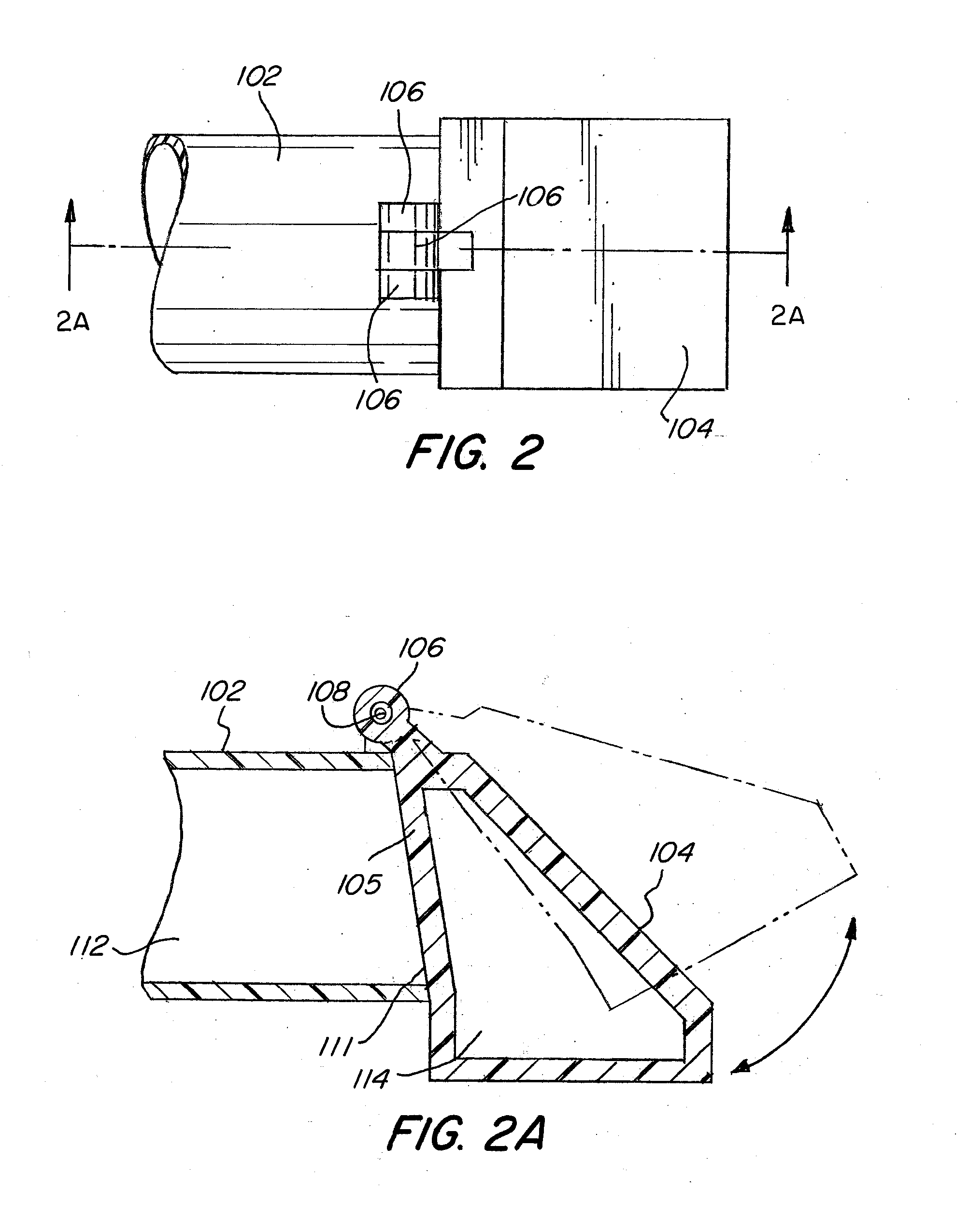Overflow Valve For Prevention Of Water Vapor Loss
a technology of overflow valve and water vapor, which is applied in the direction of valve actuation float, machine/engine, light and heating apparatus, etc., can solve the problems of excessive water loss, large height change, and large arm devices
- Summary
- Abstract
- Description
- Claims
- Application Information
AI Technical Summary
Benefits of technology
Problems solved by technology
Method used
Image
Examples
Embodiment Construction
[0040]FIG. 1 shows an assembled view of valve of an embodiment of the present invention. FIG. 1A shows an exploded view of the valve of FIG. 1. FIG. 1 provides head member 104 and rotatable member 106 / 108. The rotatable member 106 / 108 may be manufactured and fused into the head member or may be manufactured as a separate element from the head member 104. FIG. 1 also provides a drain member 102. When closed, the head member 104 rests on the drain member 102, closing the overflow valve and reducing vapor loss.
[0041]More specifically, head member 104 has a proximal end 103 and a distal end 105. The drain member 102 has a proximal end 111 and a distal end 112. As shown, the distal end of the head member 105 rests on the proximal end of the drain member 111. In certain embodiments, the distal end of the drain member 111 (also known as a drain port), is tapered, so that the distal end of the head member 105 rests on the proximal end of the drain member 111. In other embodiments, the drain...
PUM
 Login to View More
Login to View More Abstract
Description
Claims
Application Information
 Login to View More
Login to View More - R&D
- Intellectual Property
- Life Sciences
- Materials
- Tech Scout
- Unparalleled Data Quality
- Higher Quality Content
- 60% Fewer Hallucinations
Browse by: Latest US Patents, China's latest patents, Technical Efficacy Thesaurus, Application Domain, Technology Topic, Popular Technical Reports.
© 2025 PatSnap. All rights reserved.Legal|Privacy policy|Modern Slavery Act Transparency Statement|Sitemap|About US| Contact US: help@patsnap.com



